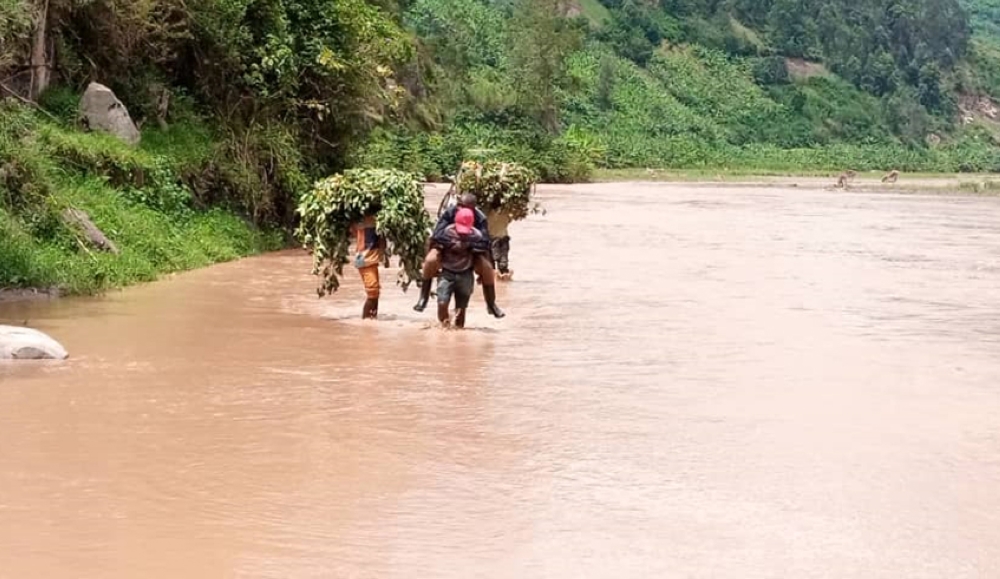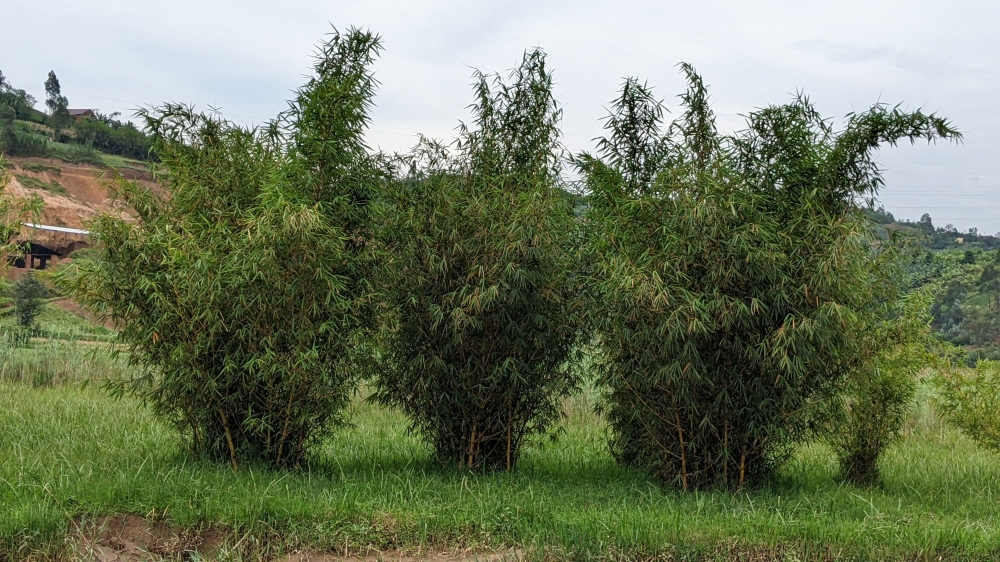

Around 35,000 indigenous trees have been planted along the Mukungwa River banks as an effective flood risk management measure.
The tree species will be part of forests to help Rwanda tap into the carbon market, a scheme under which additional funds will be provided as an incentive to projects, or farmers, who protect and preserve planted trees.
The Mukungwa River overflows its banks due to erosion caused by various human activities in its catchment area shared by five districts: Burera, Musanze, Gakenke, Nyabihu, and Ngororero.
Flowing in the northwest, Mukungwa is among the largest rivers that pose a threat to people’s lives in the rainy season.
In 2023, during a period of severe disasters in the country, the river destroyed infrastructure, crops, and biodiversity across five districts as a result of heavy rainfall.
ALSO READ: Over 3,000 forest farmers set to get incentive under carbon market scheme
Various tree species, such as bamboo and native trees, are being planted along the river to manage floods and restore the river’s catchment. Native trees are particularly being considered for a long-term solution.
Speaking to The New Times, Claudien Nsengimana, Mayor of Musanze District, said they found that "bamboo does not have a tap and deep vertical root (superficial root system) to take soil efficiently.”
"So, planting the native species is a way of protecting its river banks since they’re effective plants with stronger and vertical roots than bamboo,” he said.
It is believed that native species can spread their roots 15 metres in height compared to lateral bamboo roots.


According to Serge Shema, CEO and Founder of Wildlife Conservation Initiative which is contributing to planting indigenous trees, the approach is an effective measure to combat deadly floods and restore biodiversity along the Mukungwa River.
"We have seen that the native trees are very important to combat erosion compared to ordinary trees like bamboo,” he added.
Mitragyna rubrostipulata and Erythrina abyssinica—indigenous trees mainly found in East Africa and effective in erosion and flood control—are among the tree species being planted at the Mukungwa buffer zone.
The move, in line with Rwanda’s initiative to plant 63 million indigenous and exotic trees for the carbon market, is welcomed by Paul Foster, the Executive Director and founder of CO2 Cap Projects Africa.
He said: "We need more trees tomorrow to continue growing the carbon market in Rwanda and we appreciate such a good initiative. We need green Rwanda; we need more trees.”
ALSO READ: Entrepreneur outlines vision to unlock Rwanda's carbon trading potential
CO2 Cap Projects Africa will soon pilot a carbon credit project on 900 hectares and at least 3,000 farmers could benefit from the carbon market in the four districts.
Calculating carbon credits, he said, the firm will use blockchain-based carbon trading technology.
Statistics show that the government owns 27 per cent of the total forests equivalent to 61,485 hectares without considering national parks, meaning that farmers own over 70 per cent of forests.
Rwanda seeks to reduce 38 per cent of greenhouse gas emissions by 2030. So far, 30.4 per cent of the surface is covered by forests.
Rwanda expects to sell 7.5 million tonnes of carbon dioxide equivalent (MtCO2e) – carbon credits – estimating that they could generate $337 million (approx. Rwf420 billion).
Given that the minimum price is $30, Rwanda will expect to get $45 per carbon credit (one tonne of carbon dioxide equivalent), hence $337 million from 7.5 million tonnes of carbon dioxide equivalent.


